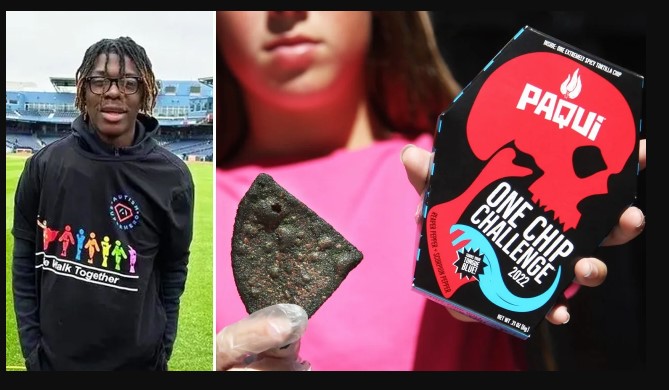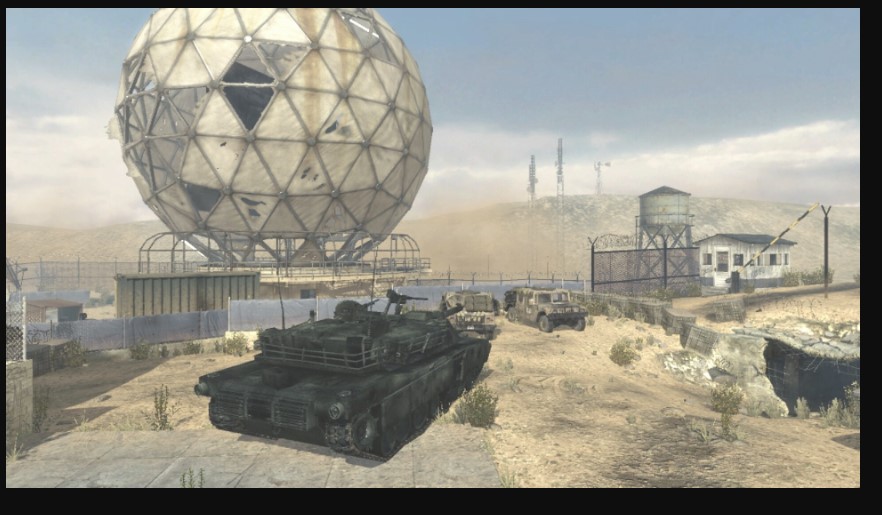Table of Contents
Introduction To One Chip Challenge Death
The One Chip Challenge has taken the internet by storm, captivating thrill-seekers with its promise of an extreme, fiery experience.
Participants consume a single tortilla chip made from one of the hottest peppers in the world, the Carolina Reaper. While many take on the challenge for fun and social media fame, the dare has a dark side, with reports of severe health reactions and, tragically, a death.
This article explores the One Chip Challenge, its health implications, and the circumstances surrounding the fatal incident, aiming to raise awareness and promote safety.
Types and Categories
Overview of Spicy Food Challenges
Spicy food challenges are not new; they have been part of culinary traditions worldwide. However, the advent of social media has amplified their popularity, turning what was once a niche interest into a viral sensation.
The Carolina Reaper Pepper Challenge
The Carolina Reaper is the world’s hottest pepper, often used in extreme food challenges. Its heat is measured at over 2.2 million Scoville Heat Units (SHU), making it a formidable adversary for even the most seasoned spicy food enthusiasts.
Ghost Pepper Challenge
Before the Carolina Reaper, the Bhut Jolokia, or Ghost Pepper, was the hottest pepper known to man. Challenges involving this pepper remain popular, as it is known for inducing intense pain and discomfort.
Spicy Ramen Challenge
Originating from Korea, the Spicy Ramen Challenge involves consuming boiling ramen noodles. The challenge is not only to finish the bowl but to do so without succumbing to the intense heat.
Categories of Participants
Spicy challenges attract diverse participants, each with their own motivations and experience levels.
Casual Participants
These individuals often participate in spicy challenges on a whim, driven by curiosity or peer pressure. They usually lack preparation and experience, making them more susceptible to adverse reactions.
Competitive Eaters
Competitive eaters participate in spicy challenges as part of their broader interest in extreme eating contests. They tend to be better prepared and more tolerant of heat.
Social Media Influencers
For influencers, spicy challenges are a way to garner attention and followers. The spectacle of enduring extreme heat often translates into high engagement on social media platforms.
Symptoms and Signs
Immediate Reactions
The One Chip Challenge triggers many immediate physical reactions, which can be alarming even to seasoned participants.
Intense Burning Sensation
The primary effect is a severe burning sensation in the mouth, throat, and stomach caused by capsaicin, the active component in chilli peppers.
Sweating and Flushing
The body’s response to the intense heat often includes profuse sweating and flushing as it attempts to cool down.
Watery Eyes and Runny Nose
Capsaicin irritates mucous membranes, leading to watery eyes and a runny nose, similar to coldcold symptoms.
Short-term Symptoms
As the body processes the capsaicin, other symptoms can develop, varying in severity based on individual tolerance and pre-existing conditions.
Nausea and Vomiting
Many participants experience nausea and vomiting as the body attempts to rid itself of the irritant.
Abdominal Pain
Severe abdominal pain is a common reaction, often described as cramping or a sharp, stabbing sensation.
Diarrhea
Digestive distress, including diarrhoea, is another common symptom as the body expels the capsaicin.
Severe Reactions
In rare cases, the One Chip Challenge can trigger severe reactions that require immediate medical attention.
Difficulty Breathing
Capsaicin can cause the airways to constrict, leading to difficulty breathing, especially in individuals with respiratory conditions like asthma.
Chest Pain
Severe chest pain can occur, mimicking the symptoms of a heart attack, and should always be taken seriously.
Fainting or Dizziness
The intense physical stress from the challenge can lead to fainting or dizziness, posing a risk of injury.
Causes and Risk Factors
Biological Factors
Individual reactions to the One Chip Challenge can vary widely and be influenced by several biological factors.
Sensitivity to Capsaicin
Genetic factors play a significant role in how a person tolerates capsaicin. Some individuals are naturally more sensitive to its effects.
Pre-existing Medical Conditions
People with underlying health issues, such as gastrointestinal disorders or cardiovascular conditions, are at higher risk of severe reactions.
Environmental Factors
External factors also contribute to the risk associated with the One Chip Challenge.
Lack of Immediate Medical Attention
The absence of immediate medical care can exacerbate the effects of severe reactions, turning a manageable situation into a critical one.
Peer Pressure and Social Media Influence
The desire to fit in or gain social media fame can push individuals to ignore warning signs and take unnecessary risks.
Lifestyle Factors
Confident lifestyle choices and habits can influence the severity of reactions to the One Chip Challenge.
Dietary Habits
A diet lacking in diverse nutrients can make the body more susceptible to the harsh effects of capsaicin.
Physical Fitness
Individuals with lower physical fitness levels may struggle more with the physical stress induced by the challenge.
Diagnosis and Tests
Initial Assessment
Proper medical assessment is crucial for individuals experiencing severe reactions to the One Chip Challenge.
Symptom Evaluation
Healthcare providers will evaluate the symptoms presented, considering the severity and duration of each.
Medical History
A detailed medical history helps identify pre-existing conditions that might influence the reaction.
Diagnostic Tools
Several diagnostic tools can be used to assess the condition of someone affected by the One Chip Challenge.
Blood Tests
Blood tests can reveal markers of inflammation or other issues exacerbated by the challenge.
Imaging Scans
Imaging scans, such as X-rays or CT scans, may be necessary to assess internal damage or complications.
Differential Diagnosis
Healthcare providers must differentiate between the effects of the One Chip Challenge and other conditions.
Food Poisoning
Symptoms of food poisoning can mimic those caused by the One Chip Challenge, requiring careful evaluation.
Allergic Reactions
Allergic reactions can present similarly to capsaicin-induced symptoms, necessitating a differential diagnosis.
Treatment Options
Immediate Care
Immediate care focuses on alleviating the acute symptoms caused by the One Chip Challenge.
Drinking Milk
Milk contains casein, which helps to neutralize capsaicin and reduce its burning sensation.
Using Ice Chips
Ice chips can provide temporary relief from the intense heat and burning sensation.
Over-the-Counter Antacids
Antacids can help mitigate stomach discomfort and acid reflux caused by the challenge.
Medical Interventions
Severe cases may require more intensive medical interventions.
Intravenous Fluids
IV fluids can help rehydrate and stabilize individuals experiencing severe reactions.
Pain Management
Medications may be necessary to manage the intense pain associated with the challenge.
Hospitalization for Severe Cases
In extreme cases, hospitalization might be required to monitor and treat severe reactions.
Home Remedies
For less severe reactions, home remedies can provide relief.
Consuming Yogurt
Yoghurt, like milk, contains casein and can help neutralize capsaicin.
Eating Bread or Starchy Foods
Starchy foods can help absorb capsaicin and reduce its impact on the stomach lining.
Rest and Hydration
Adequate rest and hydration are crucial for recovery from the intense physical stress of the challenge.
Preventive Measures
Tips for Participants
Participants can take several steps to mitigate the risks associated with the One Chip Challenge.
Understand the Risks
Fully understanding the potential risks can help participants make informed decisions.
Have Milk or Ice Cream Ready
Dairy products can provide immediate relief if symptoms become too intense.
Know Your Limits
Recognizing personal tolerance levels can prevent severe reactions and the need for medical intervention.
Strategies for Organizers
Organizers of spicy food challenges have a responsibility to ensure participant safety.
Clear Warnings and Instructions
Providing clear warnings and instructions can help participants prepare adequately for the challenge.
Availability of Medical Staff
Medical staff on standby can ensure immediate care in case of severe reactions.
Safe Environment
Creating a safe environment, free from hazards, can reduce the risk of injury during the challenge.
Community Awareness
Raising community awareness about the risks of spicy food challenges can prevent tragedies.
Educating the Public
Public education campaigns can highlight the dangers and promote safe participation.
Promoting Safe Practices
Encouraging safe practices, such as consuming small amounts first, can mitigate risks.
Discouraging Reckless Participation
Discouraging reckless participation through social media and community initiatives can save lives.
Personal Stories or Case Studies
Tragic Incident: A Detailed Account
This section explores a tragic incident linked to the One Chip Challenge.
The Victim’s Background
Details about the victim’s background, including age and health status, provide context for the incident.
The Event Leading to the Incident
An account of the events leading to the fatality, including the circumstances of the challenge.
Medical Response and Outcome
A description of the medical response and the outcome of the incident, highlighting areas for improvement.
Survivor’s Tale: Overcoming the Challenge
Personal stories of survivors provide valuable insights into the experience and recovery process.
Personal Experience
A detailed account of the individual’s experience with the One Chip Challenge.
Coping Mechanisms
Strategies used by the survivor to cope with the intense physical reactions.
Recovery Process
An overview of the recovery process, including medical care and self-care practices.
Expert Insights
Medical Professionals
Expert insights from medical professionals can help explain the physiological effects of the One Chip Challenge.
Dr. Jane Smith on Capsaicin Toxicity
Dr. Smith provides an overview of capsaicin toxicity and its impact on the body.
Nurse John Doe on Immediate Care
Nurse Doe offers advice on immediate care practices for those experiencing severe reactions.
Nutritionists
Nutritionists provide dietary advice to help mitigate the effects of the One Chip Challenge.
Dietary Advice by Sarah Lee
Sarah Lee discusses dietary strategies to prepare for and recover from the challenge.
Hydration Tips by Michael Brown
Michael Brown emphasizes the importance of hydration before, during, and after the challenge.
Psychologists
Psychologists analyze the social and psychological factors influencing participation in the One Chip Challenge.
Peer Pressure Analysis by Dr Emily White
Dr. White explores how peer pressure can drive individuals to take on risky challenges.
Social Media Impact by Dr Mark Green
Dr. Green discusses the role of social media in popularizing the One Chip Challenge and its associated risks.
Conclusion
Summary of Key Points
While popular and entertaining, the One Chip Challenge poses significant health risks. Understanding these risks and taking preventive measures is crucial for safe participation.
Call to Action for Further Education
Educating oneself and others about the dangers of extreme spicy food challenges can prevent tragedies and promote safer practices.






